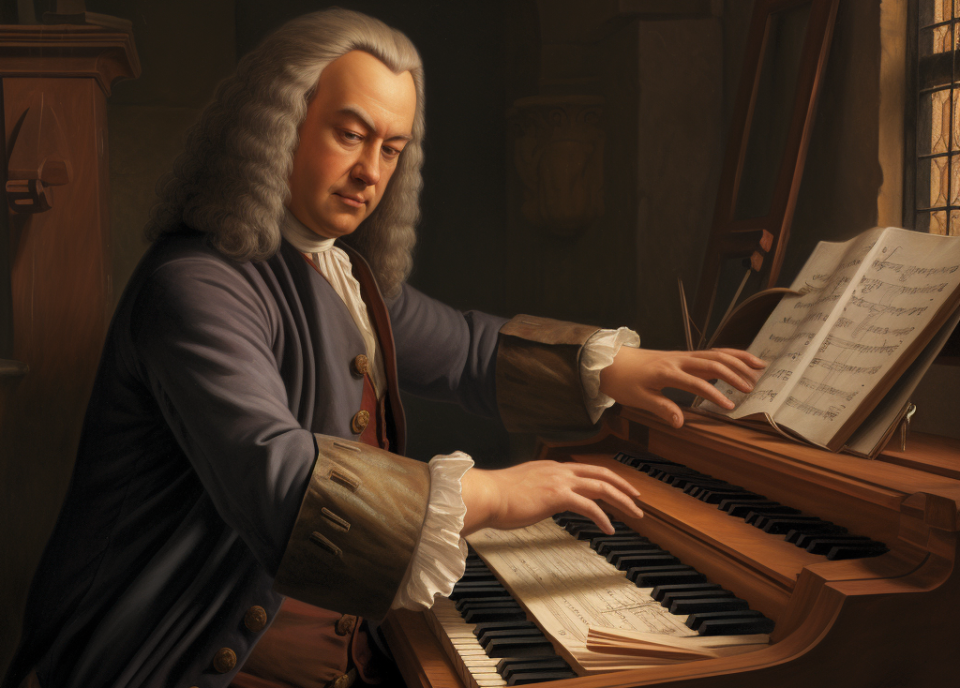Johann Sebastian Bach: Overview and Impact as a Music Artist
Johann Sebastian Bach (1685–1750) was a German composer, organist, and violinist whose mastery of Baroque music established him as one of the most influential composers in Western music history. Born in Eisenach, Germany, Bach’s work spans sacred and secular music, known for its technical mastery, intricate counterpoint, and emotional depth. His compositions encompass a range of forms, including cantatas, fugues, concertos, and suites, and remain foundational to classical music. Though his music was somewhat overlooked after his death, the 19th-century revival of his work solidified his place as a pivotal figure in music, and his compositions continue to influence musicians and composers worldwide.
Key Phases in Bach’s Career
- Early Life and Weimar Period (1703-1717): Bach’s musical career began with positions as an organist and court musician in Arnstadt and Mühlhausen, and he later moved to Weimar, where he served as court organist and concertmaster. During this period, he composed numerous organ works, such as the famous Toccata and Fugue in D minor and several of his Orgelbüchlein (Little Organ Book) chorales. His compositions demonstrated his growing mastery of counterpoint and laid the foundation for his later innovations.
- Cöthen Period and Instrumental Works (1717-1723): In 1717, Bach took a position as Kapellmeister (music director) for Prince Leopold of Anhalt-Cöthen, a role that allowed him to focus on secular instrumental music. He produced many of his best-known works, including the Brandenburg Concertos, the Well-Tempered Clavier (Books I and II), and Suites for Solo Cello. These compositions showcased his technical and creative brilliance, pushing the boundaries of instrumental music and introducing new levels of complexity and expression.
- Leipzig Period and Sacred Works (1723-1750): In 1723, Bach became Cantor at the St. Thomas Church in Leipzig, a prestigious position that involved creating music for church services and special occasions. His Leipzig years were prolific, resulting in monumental works such as the St. Matthew Passion, the Mass in B Minor, and numerous cantatas. This period solidified Bach’s reputation as a master of sacred music, with works that combined theological depth with profound emotional and musical complexity.
- Late Works and Legacy (1740s): In his final years, Bach created some of his most intricate and reflective works, including The Art of Fugue and The Musical Offering, which explore complex counterpoint and fugal techniques. His Goldberg Variations became one of his most admired compositions, celebrated for its variation form and keyboard virtuosity. These late works reflect Bach’s mastery of structure and technique and showcase his unyielding dedication to pushing musical boundaries.
Musical Style and Themes
Bach’s music is renowned for its structural complexity, intellectual rigor, and emotional expressiveness. His use of counterpoint, where independent melodic lines interweave harmonically, became a hallmark of Baroque music. Bach’s sacred music often reflects his deep Lutheran faith, with chorales and cantatas crafted to inspire spiritual reflection. His instrumental works are known for their mathematical precision, thematic inventiveness, and technical demands, while his compositions frequently explore themes of spirituality, joy, sorrow, and human transcendence.
Legacy and Influence
- Master of Counterpoint and Form: Bach’s mastery of counterpoint and harmonic structure became a foundational influence on classical music. His work, particularly in fugues and canons, set standards that have been studied and emulated by composers for centuries. His Well-Tempered Clavier, with its systematic exploration of all 24 keys, had a profound impact on the development of Western tonal music, influencing composers like Ludwig van Beethoven, Wolfgang Amadeus Mozart, and Johannes Brahms.
- Revival and Impact on Romantic and Modern Composers: While his music was largely forgotten for several decades after his death, the 19th-century revival of Bach’s work, led by composers like Felix Mendelssohn, sparked a new appreciation for his genius. His approach to form and counterpoint became a critical influence on Romantic composers and, later, on modernist composers such as Igor Stravinsky and Dmitri Shostakovich, who admired Bach’s structural innovation and expressive power.
- Influence on Sacred and Secular Music: Bach’s work bridged the sacred and secular, enriching both with his technical and emotional insights. His St. Matthew Passion and Mass in B Minor are masterpieces of sacred music that have become central works in choral literature, while his secular compositions, including the Brandenburg Concertos, expanded the possibilities of instrumental music and concerto form.
- A Standard for Virtuosity and Pedagogy: Bach’s music is integral to music education, with his compositions serving as technical exercises for musicians and benchmarks of virtuosity for performers. His keyboard works, such as the Goldberg Variations and Inventions and Sinfonias, are foundational in piano and organ training, and his music remains a standard for musical analysis, theory, and performance practice.
Conclusion
Johann Sebastian Bach’s contributions to music are unparalleled in scope and influence. His mastery of counterpoint, form, and expression has shaped Western music and continues to inspire and challenge musicians. Bach’s music embodies a profound balance between technical sophistication and emotional depth, and his legacy as a composer and musician is reflected in the timelessness and universality of his works, which remain central to classical music and beloved by audiences worldwide.
References:
- Wolff, C. (2000). Johann Sebastian Bach: The Learned Musician. W.W. Norton & Company.
- Boyd, M. (1999). Bach. Oxford University Press.
- Geck, M. (2006). Johann Sebastian Bach: Life and Work. Harcourt.
- “Johann Sebastian Bach.” The Grove Dictionary of Music and Musicians.


Leave a Reply